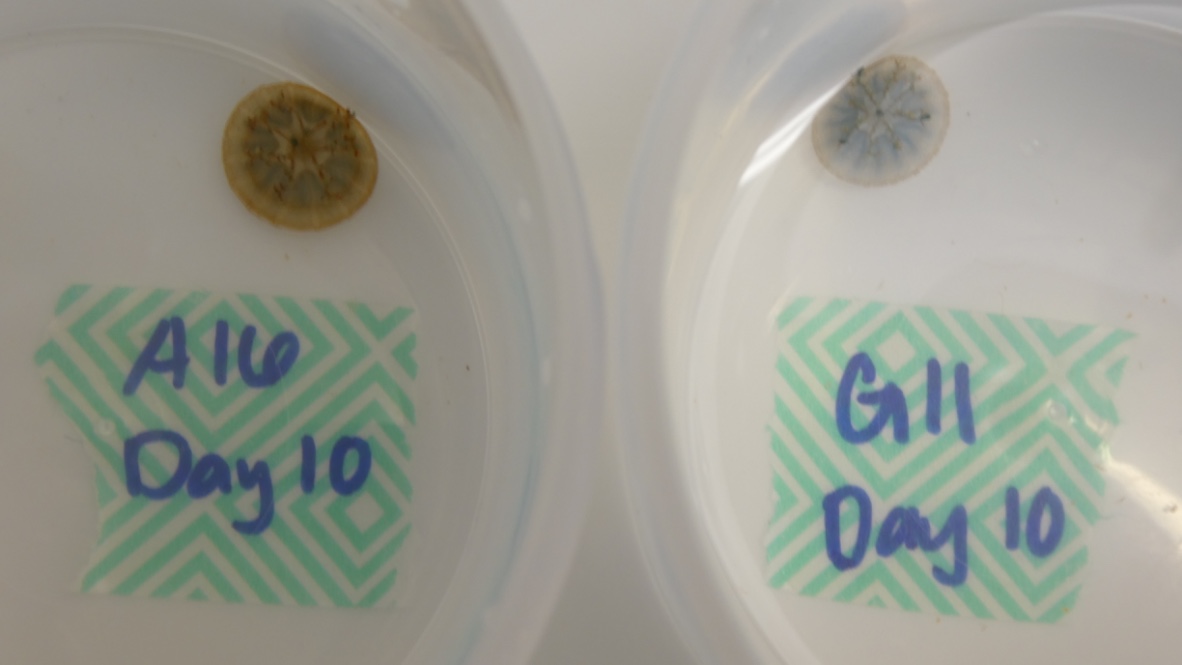Herbicides are an integral part of global agricultural activity but can be advected into local drainages that can discharge to coastal marine systems. Herbicide runoff can impact coastal marine organisms, including those associated with coral reefs and coastal mangrove forests. In this study, the symbiotic sedentary jellyfish Cassiopea maremetens were exposed to analytical grade hexazinone to determine their sensitivity and potential for recovery after exposure to a press herbicide event of 14 days followed by a recovery period of matching duration. Bell surface area, photosynthetic yield (i.e. effective quantum yield, EQY), statolith count and zooxanthellae density were analyzed. Most metrics demonstrated significant decreases when exposed to higher concentrations of hexazinone, while EQY was significantly decreased at exposure concentrations from 31 μg/L hexazinone and above. In contrast, zooxanthellae density (cells/mm2) increased in the highest concentrations compared to control animals. At the end of the exposure period the EC50 for bell surface area, EQY, and statolith count were 176 μg/L, 81.96 μg/L, and 304.3 μg/L, respectively. Jellyfish were able to recover to similar start values for all measured metrics at the end of the 14-day recovery period, with EQY showing recovery by Day 7 of the recovery period. This study demonstrated that statolith counts as an estimate of age were not affected by herbicides. We conclude that the depressed metrics from herbicide related impacts of C. maremetens are effective indicators of a relatively recent herbicide perturbation in that the recovery timeframe for these jellyfish is relatively short.
Full paper here: McKenzie, M.R., Templeman, M.A., Kingsford, M.J., 2020. Detecting effects of herbicide runoff: the use of Cassiopea maremetens as a biomonitor to hexazinone. Aquatic Toxicology, doi: https://doi.org/10.1016/j.aquatox.2020.105442

